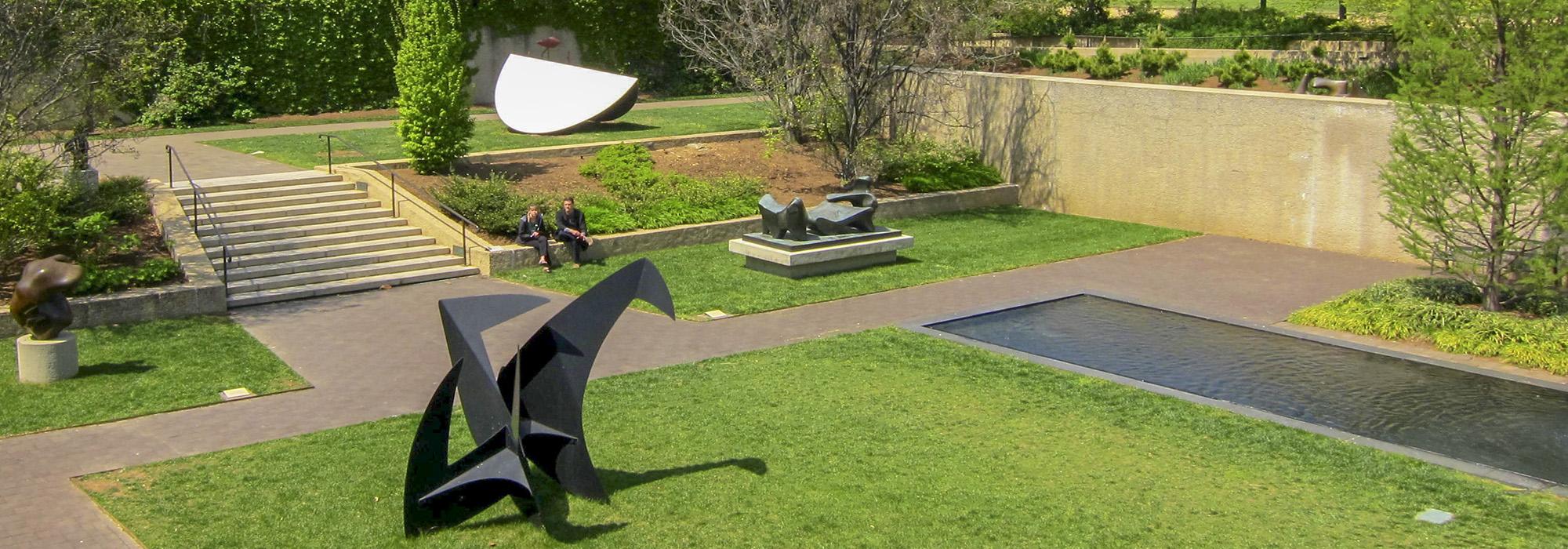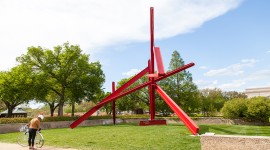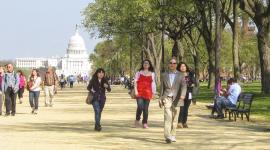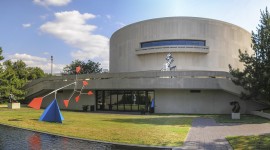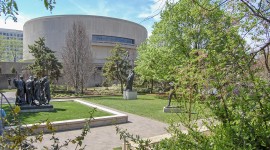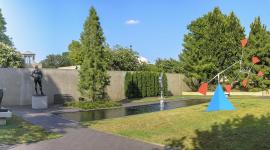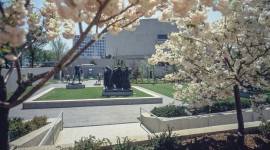Hirshhorn Officials Rebuff Concerns Over Sculpture Garden Redesign
On May 27, 2020, Section 106 consulting parties met over Zoom to discuss the proposed redesign of the Hirshhorn Sculpture Garden. Museum officials made clear, however, that they were only nominally interested in seriously addressing the adverse effects that the Hiroshi Sugimoto-led redesign would have on the historic core of the sunken sculpture garden, as detailed in the draft Assessment of Effects (AOE). Moreover, the online meeting was carefully circumscribed to limit meaningful involvement by the official consulting parties, with tightly controlled question and answer sessions and little opportunity for follow-up. As the Advisory Council on Historic Preservation notes: “Consultation is at the heart of the Section 106 process.” However, in this instance the collegial back-and-forth conversation involving official consulting parties that has long been the hallmark of a legitimate Section 106 process was absent. The event may have met the letter of the law, but it did not honor the intended spirit.
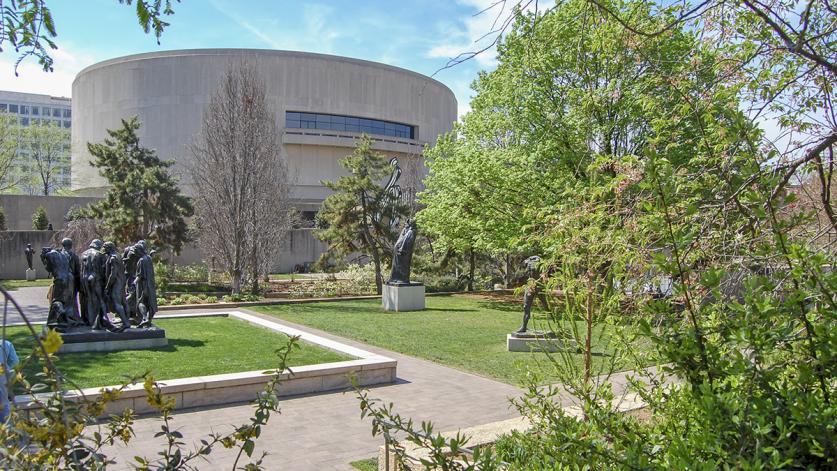
The crux of the matter is that architect Gordon Bunshaft created a unified campus via a common design vocabulary and consistent use of aggregate concrete. And while Bunshaft’s original sculpture garden of 1974 was lambasted by many critics as inhospitable, the 1981 redesign by landscape architect Lester Collins managed to retain the campus’ overall design integrity and uniformity. The proposed Sugimoto redesigns presented in April 10, 2019, and May 27, 2020 (below), would sever the relationship between the museum building and the sunken sculpture garden by fundamentally altering key design features in the garden’s core that unify the entire campus.
The primary feature of the central core—and of the sculpture garden itself—is a rectangular reflecting pool. As The Cultural Landscape Foundation (TCLF) and reviewing agencies have noted, the visual interplay between the reflecting pool and the rectangular balcony window on the north side of the museum constitutes a particularly strong connection between the building architecture and the landscape architecture. In addition to their similar rectangular shapes, the pool and the window are aligned on the north-south axis that bisects the museum building and continues through the garden.
The vastly expanded reflecting pool in the revised Concept Design shown at the May 27, 2020, Section 106 Meeting (above) does not preserve the important relationship between the pool and the balcony window. The renderings in the Concept Design show that the dimensions of the pool would only be fully expressed in one of several configurations resulting from the variable level of water in the new theater-like pool arrangement; even in that particular case, the pool’s prominence would be diminished by the T-shaped stage and apron that would form its southern boundary. In no case, therefore, would the simple rectangular, horizontal gesture that Bunshaft placed in the garden, which Lester Collins wisely left unaltered, continue to communicate fully with the equally simple and stark gesture he placed in the building. While museum officials do concede this new design would be an adverse effect, they claim through a bit of linguistic legerdemain that the “[a]dverse effect is minimized by retaining a dimensional memory of the pool within the enlarged water feature” (emphasis added).
In addition, replacing the current aggregate partition wall, which is a prominent backdrop to the pool, with a stacked-stone wall would significantly distance the proposed redesign from that of the sunken garden, and, importantly, from the museum building as well. This runs counter to Bunshaft’s design intent, according to a September 12, 1977 memo written by former Smithsonian Secretary S. Dillon Ripley concerning the Collins redesign of the sculpture garden. In it, Ripley wrote that he “spoke to Gordon Bunshaft today about the new design.” He went on: “[Bunshaft] said that he hoped that the materials used … would consist of the same kind of aggregate concrete work which occurs in the main building.”
It’s also worth noting that while the draft AOE presently notes adverse effects from potential changes to the wall’s height and materiality, it does not indicate the adverse effect stemming from a change to the wall’s shape. In the current Concept Design, what was a shear aggregate wall representative of the Brutalist idiom in its simple, spare form would become an angular, stacked-stone wall—a pylon whose base is wider than its top—characteristic of ancient building traditions. The used of staked stone has raised concerns among several official consulting parties including a representative from the District of Columbia Historic Preservation Office who recently “urge[d] the Smithsonian to replace that wall in-kind.”
For context, architectural historians have noted that several of Gordon Bunshaft’s projects, particularly those realized after the beginning of the 1960s, evince the architect’s interest in the interplay between architecture and sculpture. In fact, regarding the Hirshhorn building, Bunshaft let it be known that he wanted the experience of visitors to be “comparable to an encounter with a work of art” (see, e.g., Adams, N., Gordon Bunshaft and SOM: Building Corporate Modernism. Yale University Press: 2019, p. 198). When Bunshaft presented his design for the Hirshhorn to the U.S. Commission of Fine Arts (of which he was then a current member), fellow architect John Carl Warnecke probed that very point, asking Bunshaft whether the museum was “a sculpture or a building.” Bunshaft’s reply is worth quoting at length:
We studied trying to break up the surface, expressing some ribbed effect or something, and it is just wrong because everything here [in the vicinity of the National Mall] has this pattern, and some place there ought to be something simple. This is really a piece of sculpture (emphasis added).
If Bunshaft was unambiguous about the artistic nature of his design, he was equally clear that the sculpture garden was integral to it, telling the National Capital Planning Commission: “A sculpture garden is as essential to this museum as a surgical section is to a hospital” (see “Department of the Interior and Related Agencies Appropriations for 1972: 1st Session, Part 4,” pp. 942-43). In this way, the Hirshhorn Sculpture Garden stands in relation to the museum building as earlier sunken gardens stood in relation to other Bunshaft buildings, namely the sunken garden at the Chase Manhattan Bank Plaza (1961) and the sunken garden at the Beinecke Rare Book and Manuscript Library (1963) on the campus of Yale University—two landscapes designed by sculptor Isamu Noguchi to be perceived from above. In the former, water flowed over rocks brought from the Uji River in Japan, thus contributing to both the visual and aural qualities of the space (Adams, p. 76). Although the design of the Hirshhorn Sculpture Garden fell to Bunshaft rather than Noguchi, and was later reinterpreted by master landscape architect Lester Collins, the garden is nonetheless a work of art.
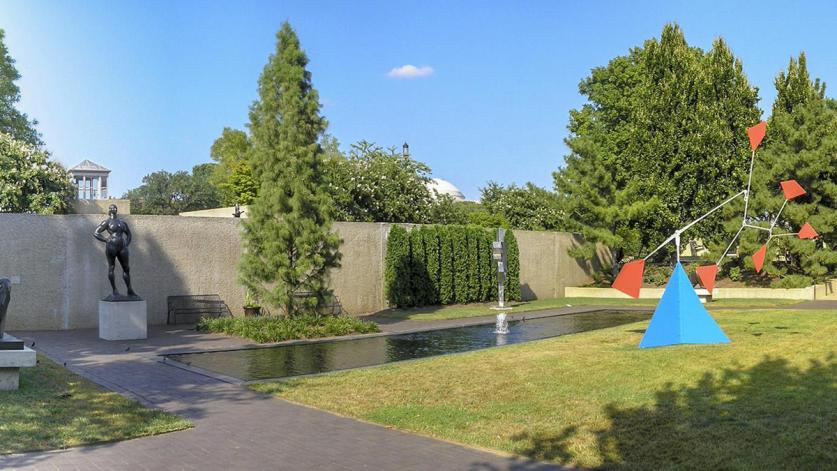
The attempt to visually sever the relationship of the sunken sculpture garden to the museum seems to be mirrored by an attempt to rename the museum. According to a recent media report, museum officials have already begun a renaming campaign that would position the “Hirshhorn Museum and Sculpture Garden” as the “Hirshhorn National Museum of Modern Art.” However, in 1982 Nancy Kirkpatrick, the museum’s executive officer, stated quite clearly:
The Sculpture Garden, integral to the Museum's mission, is the only garden specifically referred to in any public law pertaining to the Smithsonian Institution (P.L 89-788 "to provide for the establishment of the Joseph H. Hirshhorn Museum Sculpture Garden, and for other purposes.") It is not a by-product or an afterthought; and the very name of our museum indicates its importance.
The sunken garden at the Hirshhorn, like many landscapes, has a carrying capacity for change. However, any revitalization effort that sacrifices the clarity of the unified and holistic design must be deemed a failure, no matter its artistic ambition or programmatic utility. Were this a private property, the owners would have free rein to redesign it as they see fit. However, this is a work of art held in public trust. TCLF believes the sculpture garden and the museum building should remain intimately bound together, just as Bunshaft conceived them to be.



